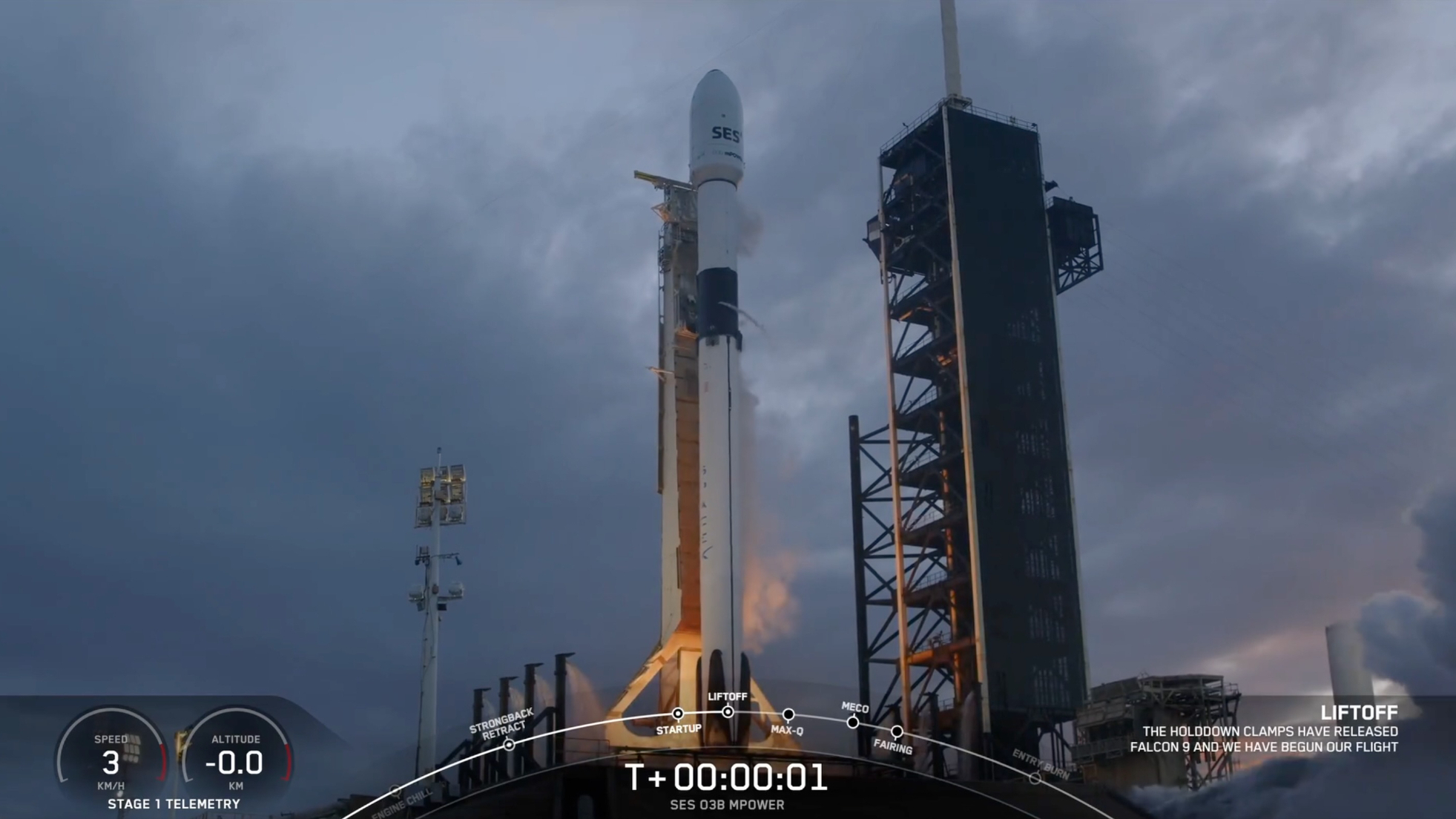SpaceX launched two communication satellites from Florida's Space Coast today (Dec. 17) on the second leg of a spaceflight doubleheader.
A Falcon 9 rocket lifted off from NASA's Kennedy Space Center today at 5:26 p.m. EDT (2226 GMT), carrying the O3b mPOWER 7 and 8 satellites toward medium Earth orbit (MEO), about 5,000 miles (8,000 kilometers) above our planet.
The Falcon 9's first stage came back to Earth for a touchdown on the SpaceX droneship "Just Read the Instructions" about 8.5 minutes after launch today as planned. It was the first-ever liftoff and landing for this particular booster, according to a SpaceX mission description.

The rocket's upper stage, meanwhile, continued carrying the two satellites to orbit. It will deploy the first one about 113 minutes after launch and the second seven minutes later.
Related: SpaceX launches O3b mPOWER communication satellites on its 84th mission of 2023
O3b mPOWER is a MEO communications constellation operated by the Luxembourg-based company SES. It currently consists of six satellites, which reached orbit on three Falcon 9 missions that flew between December 2022 and November 2023.
The network is operational now, but it will keep growing to a total of 11 satellites, all of which will leave Earth atop Falcon 9 rockets. The spacecraft are built by Boeing and weigh about 3,750 pounds (1,700 kilograms) apiece.
Breaking space news, the latest updates on rocket launches, skywatching events and more!

The mPOWER launch was SpaceX's second of the day. Another Falcon 9, flying from Vandenberg Space Force Base in California this morning, lofted the NROL-149 mission for the U.S. National Reconnaissance agency.
SpaceX has launched more than 120 Falcon 9 missions in 2024 so far. The vast majority of them — nearly 70% — have been devoted to assembling the company's Starlink broadband network in low Earth orbit.
The Starlink megaconstellation currently consists of more than 6,800 operational satellites and could eventually harbor 40,000 spacecraft.
Editor's note: This story was updated at 5:45 p.m. ET on Dec. 17 with news of successful launch and rocket landing.
Join our Space Forums to keep talking space on the latest missions, night sky and more! And if you have a news tip, correction or comment, let us know at: community@space.com.

Michael Wall is a Senior Space Writer with Space.com and joined the team in 2010. He primarily covers exoplanets, spaceflight and military space, but has been known to dabble in the space art beat. His book about the search for alien life, "Out There," was published on Nov. 13, 2018. Before becoming a science writer, Michael worked as a herpetologist and wildlife biologist. He has a Ph.D. in evolutionary biology from the University of Sydney, Australia, a bachelor's degree from the University of Arizona, and a graduate certificate in science writing from the University of California, Santa Cruz. To find out what his latest project is, you can follow Michael on Twitter.
